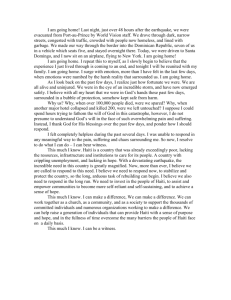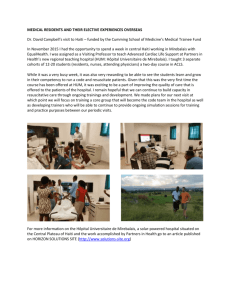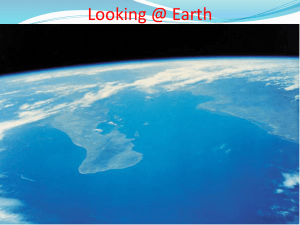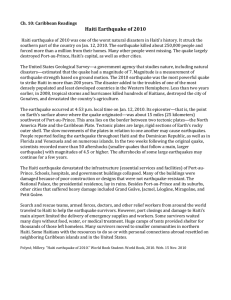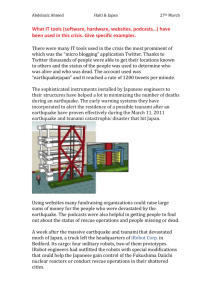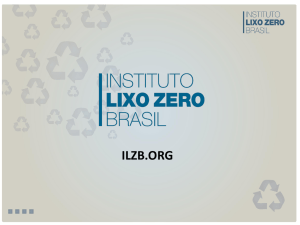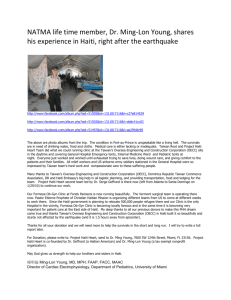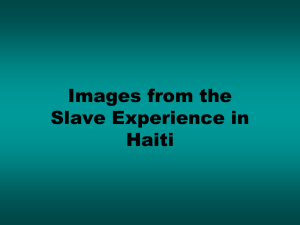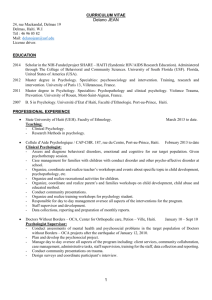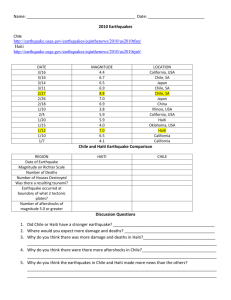haiti earthquake 2010 case study sheet
advertisement
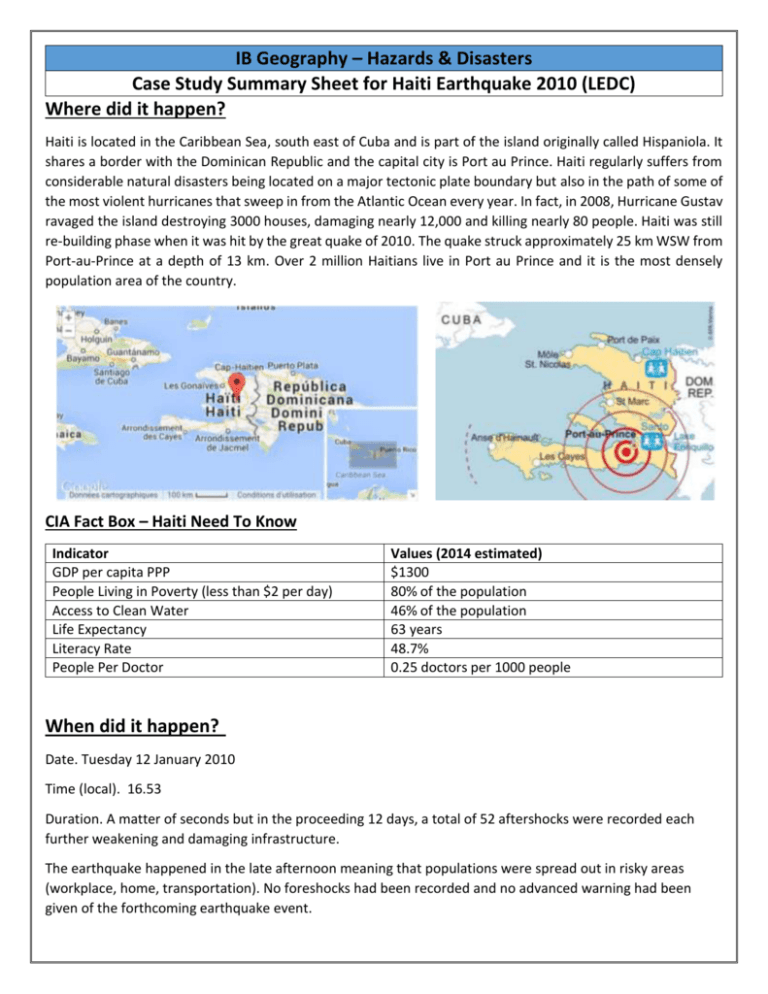
IB Geography – Hazards & Disasters Case Study Summary Sheet for Haiti Earthquake 2010 (LEDC) Where did it happen? Haiti is located in the Caribbean Sea, south east of Cuba and is part of the island originally called Hispaniola. It shares a border with the Dominican Republic and the capital city is Port au Prince. Haiti regularly suffers from considerable natural disasters being located on a major tectonic plate boundary but also in the path of some of the most violent hurricanes that sweep in from the Atlantic Ocean every year. In fact, in 2008, Hurricane Gustav ravaged the island destroying 3000 houses, damaging nearly 12,000 and killing nearly 80 people. Haiti was still re-building phase when it was hit by the great quake of 2010. The quake struck approximately 25 km WSW from Port-au-Prince at a depth of 13 km. Over 2 million Haitians live in Port au Prince and it is the most densely population area of the country. CIA Fact Box – Haiti Need To Know Indicator GDP per capita PPP People Living in Poverty (less than $2 per day) Access to Clean Water Life Expectancy Literacy Rate People Per Doctor Values (2014 estimated) $1300 80% of the population 46% of the population 63 years 48.7% 0.25 doctors per 1000 people When did it happen? Date. Tuesday 12 January 2010 Time (local). 16.53 Duration. A matter of seconds but in the proceeding 12 days, a total of 52 aftershocks were recorded each further weakening and damaging infrastructure. The earthquake happened in the late afternoon meaning that populations were spread out in risky areas (workplace, home, transportation). No foreshocks had been recorded and no advanced warning had been given of the forthcoming earthquake event. Why did it happen? Strong shaking associated with intensity IX on the Modified Mercalli scale (MM) was recorded in Port-au-Prince and its suburbs. It was also felt in several surrounding countries and regions. According to estimates from the United States Geological Survey, approximately 3.5 million people lived in the area that experienced shaking intensity of MM 7 to 10, a range that can cause moderate to very heavy damage even to earthquake-resistant structures. Shaking damage was more severe than for other quakes of similar magnitude due to the shallow depth of the quake. The quake occurred in the vicinity of the northern boundary where the Caribbean tectonic plate shifts eastwards by about 20 mm (0.79 in) per year in relation to the North American plate. The January 2010 quake was caused by a rupture of the Enriquillo-Plantain Garden fault, which had been locked for 250 years, gathering stress. Who was affected by it happening? Social Impacts 3 million people in total affected. Over 220,000 deaths caused by the collapsing buildings, a small tsunami and the cholera epidemic in the proceeding weeks. The resulting sanitation problems have increased cases of dysentery, malaria and drug-resistant tuberculosis 300,000 injured and treatment difficult due to several hospitals collapsing and the death and displacement of medical staff in and around Port au Prince. Economic Impacts 30,000 commercial buildings collapsed leading to a loss of trade and income for the already crippled economy. Businesses destroyed and vast sums of money for the rebuilding process – money that Haiti did not have. Damage to the main clothing industry. Airport and port damaged so damage to imports and exports as well as a slow down in the rescue and response from overseas. 1.3 million people made homeless due to collapsed or partially collapsed and unsafe housing. Environmental Impacts Deforestation and forest clearance to make way for temporary camps and for building materials. Small scale pollution by the leakage of oil and other chemicals into the surrounding environment due to the rupture and damage to industrial facilities. Pollution of water supply leading to cholera epidemic. Political Impacts Appeals for international aid were immediately requested by Raymond Joseph, Haiti's ambassador to the United States and his nephew, singer Wyclef Jean. The American Red Cross quickly announced that it had run out of supplies in Haiti and appealed for public donations. Haiti’s justice system remains in disarray with very few of those arrested in the past year having been brought before a judge at all, let alone within 48 hours of arrest as required by Haitian law What happened? *Leave this until we complete the next section on risk assessment and adjustments & responses to hazards Management of the earthquake hazard in Haiti. Before the event During the event After the event - Planning, preparation, prediction, hazard mapping, evacuation, warnings. Help with recovery, aid - local, regional and international, role of NGOs. Rescue (short) Rehabilitation (Medium) Reconstruction (Long) Task: Some information is included below. Sort into the 3 R’s above and carry out additional research to fill in any blanks that you may have. United Nations As the extent of the catastrophe unfolded, United Nations Secretary-General Ban Ki-moon commented: "There is no doubt that we are facing a major humanitarian emergency and that a major relief effort will be required". The U.N. mobilized an emergency response team to help coordinate humanitarian relief efforts. The Security Council authorised an increase of 3,500 troops and police of the United Nations Stabilization Mission in Haiti in Resolution 1908. The World Bank provided extra funding of $100 million to support recovery and reconstruction in Haiti. UNICEF made an emergency appeal for assistance to aid the victims. Within days donations enabled UNICEF to deliver planeloads of life-saving health, nutrition, water and sanitation supplies for more than a quarter of a million children. In the months that followed UNICEF helped vaccinate more than two million children against lifethreatening diseases, and supported the government with recovery efforts. The World Health Organization sent a "12-member team of health and logistics experts."
